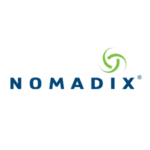 I’m looking for an end to end solution to labor planning and I have yet to see one that brings it all home. Let me explain what I mean.
I’m looking for an end to end solution to labor planning and I have yet to see one that brings it all home. Let me explain what I mean.
In a hotel that budgets and forecasts labor hours, productivity, and business volumes and uses a labor planning tool to generate schedules, we need an end to end tool or set of tools that ties everything to do with labor together. Budgets, Forecasts, Schedules and Variance Analysis all need to be geared to the same measure.
So now that you’re confused, let me paint you a picture. For me to paint this for you it’s imperative that you use productivity measurements in all your financial reporting – hours per room occupied and hours per customer served in F&B. If you don’t use these in your budgets, forecasts and actual financial reporting – you should. If you don’t, I’m sorry to say that the rest of this article will probably be of no use to you. If you use labor as a percentage of revenue or as a cost per room occupied that’s OK, but not nearly as effective as hours per.
Here is the scenario. You’re in the last throes of budget 2019. You have all your numbers together and you are proud to say that the rooms and F&B labor productivity budgeted next year are better than the 2018 re-forecast. You made sure of it and your year-over-year statements prove it. Well done. You have taken the approach that you will run your hotel more efficiently next year than this year. After all that’s what you get paid to do, right? Who would put forward a budget that says to the owners, “By the way my plan is to have the hotel operate less effectively next year wasting resources and consuming more costs.” You’re just not going to be the one who makes that kind of fatal move.
Now let’s imagine it’s January and the budget is approved. You need to move into the new year with the business plan for 2019 in hand. With labor, you turn the ideas that are in your budget into reality with your Operation Managers. They need to put into action the ideas you conceived in the budget to achieve the increased efficiencies. This is where the rubber meets the road. You have a quick look at the month of January and you see the budgeted productivity for rooms is 1.255 hours per room occupied. Last January the productivity was 1.291. You have some work to do.
Let’s move from 10,000 feet down to the ground. In your hotel, you have a labor planning tool. Your departments use it to generate their schedules and they measure their schedule to the labor standards. Here is where it all falls apart. This is the missing piece and the missing link to your budget. The labor standards are essential to produce the schedules, but they must also produce an overall productivity by the same key areas we track on the financials. The labor planning tool must be programmed to spit out the scheduled productivity and analyze the actual vs. the scheduled and the budget/forecast. End to end we must always be using productivity. I have said this before and I’ll say it again, “We need to be fascinated with productivity!” If we were making cars it would be hours per car; in the hotel business, we’re focused on rooms, F&B, and non-operating department productivity.
I am sure someone out there has put this all together in their financial modeling system and it also seamlessly feeds their labor planning tool. I would love to see your system in action. If you’re not 100% sure about what I am referencing, that’s OK. Call me and I can explain further.
In my past life, I worked with a great financial modeling tool and a “so-so” labor planning tool. The stewards of the labor planning tool could not, or would not, see the value of having the productivity as another measure in their system. They were firmly stuck on the labor productivity standard, which ultimately meant nothing because the standard changed frequently. All that was missing was a simple additional measure which would have divided the hours worked by the anticipated and actual volume of business and voila, it would have been magic! What we ended up doing to work around this was to dump the data from the labor tool into Microsoft Excel, analyze it and see if the schedules were producing equal or better labor productivity by area, department, and division. We messed around a lot with this and very often the labor standards were producing less. This is ultimately where the labor tool sucked wind.
Build productivity into each part of your reporting, planning and scheduling processes. Always be measuring productivity. Always challenge your department managers to find ways to improve productivity. Show them how the simple measurement works and have them find ways to make it better. The hotel business is a game of inches. Every day we sell hundreds of rooms and we service hundreds if not thousands of F&B customers. To do this we expend thousands of hours of labor. It all boils down to the volume of business and the hours worked and how can we get just a little better tomorrow.
This article is dedicated to Dan Araujo, who analyzed all that data not so long ago. He was taken from us way to early!



















